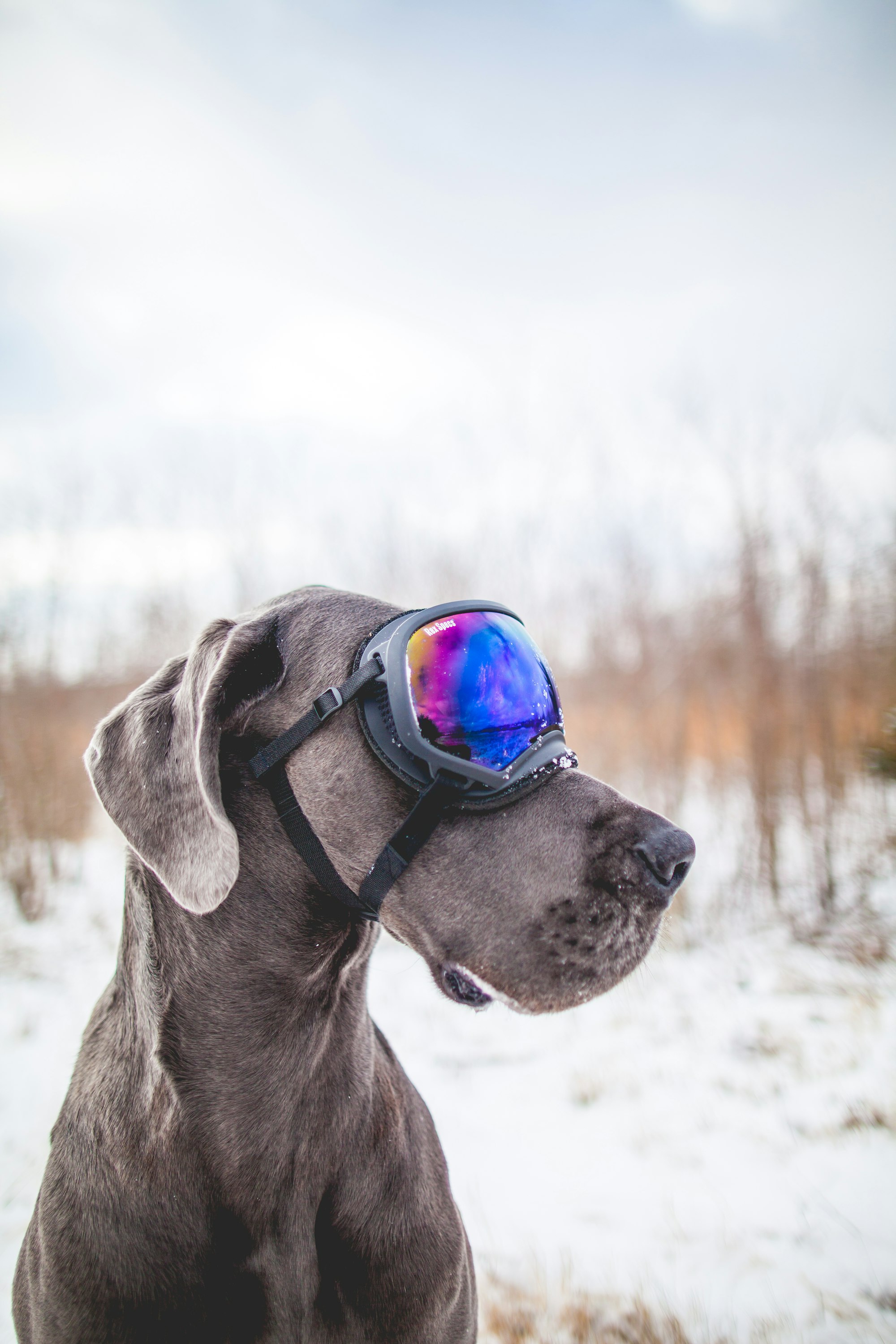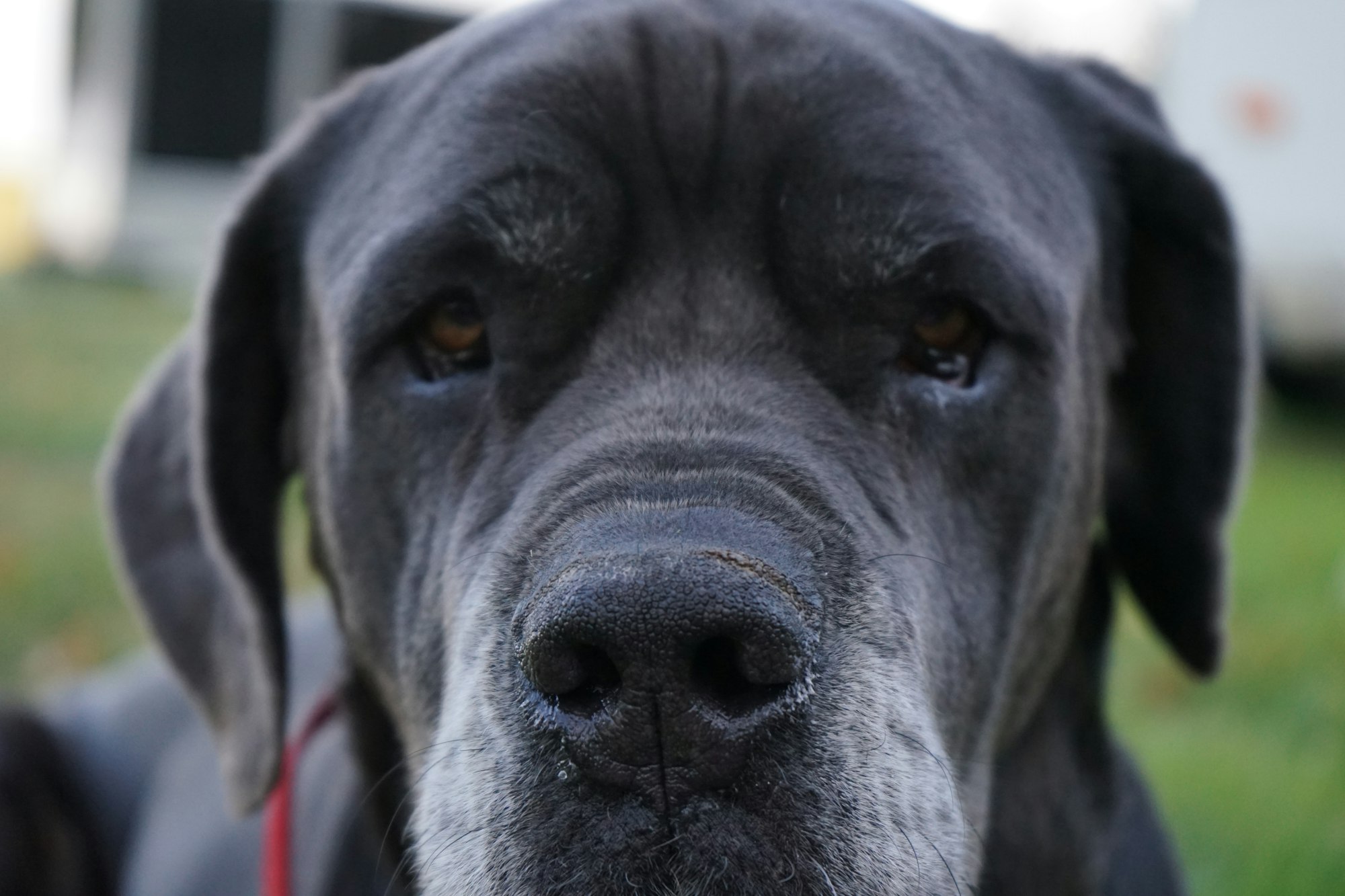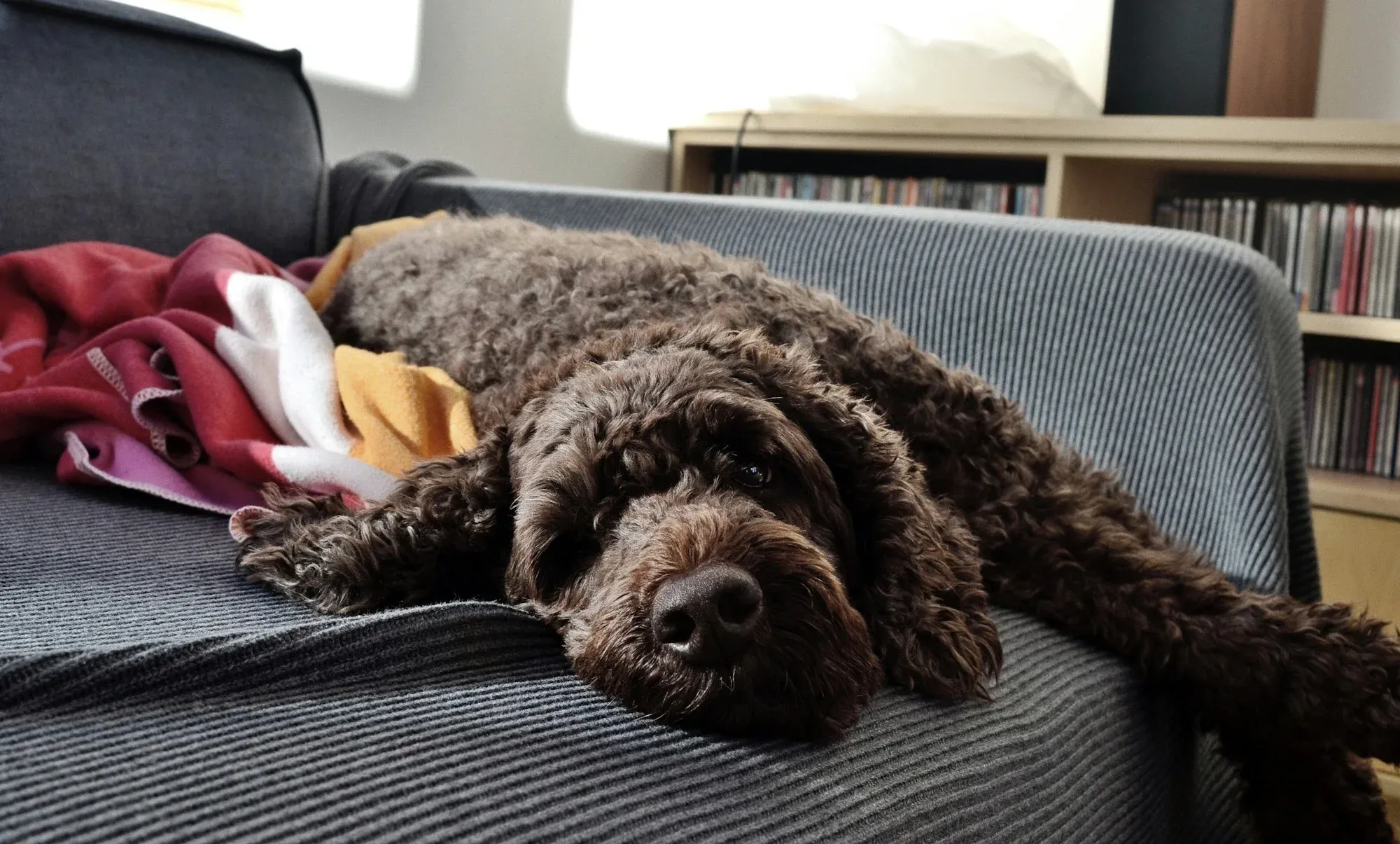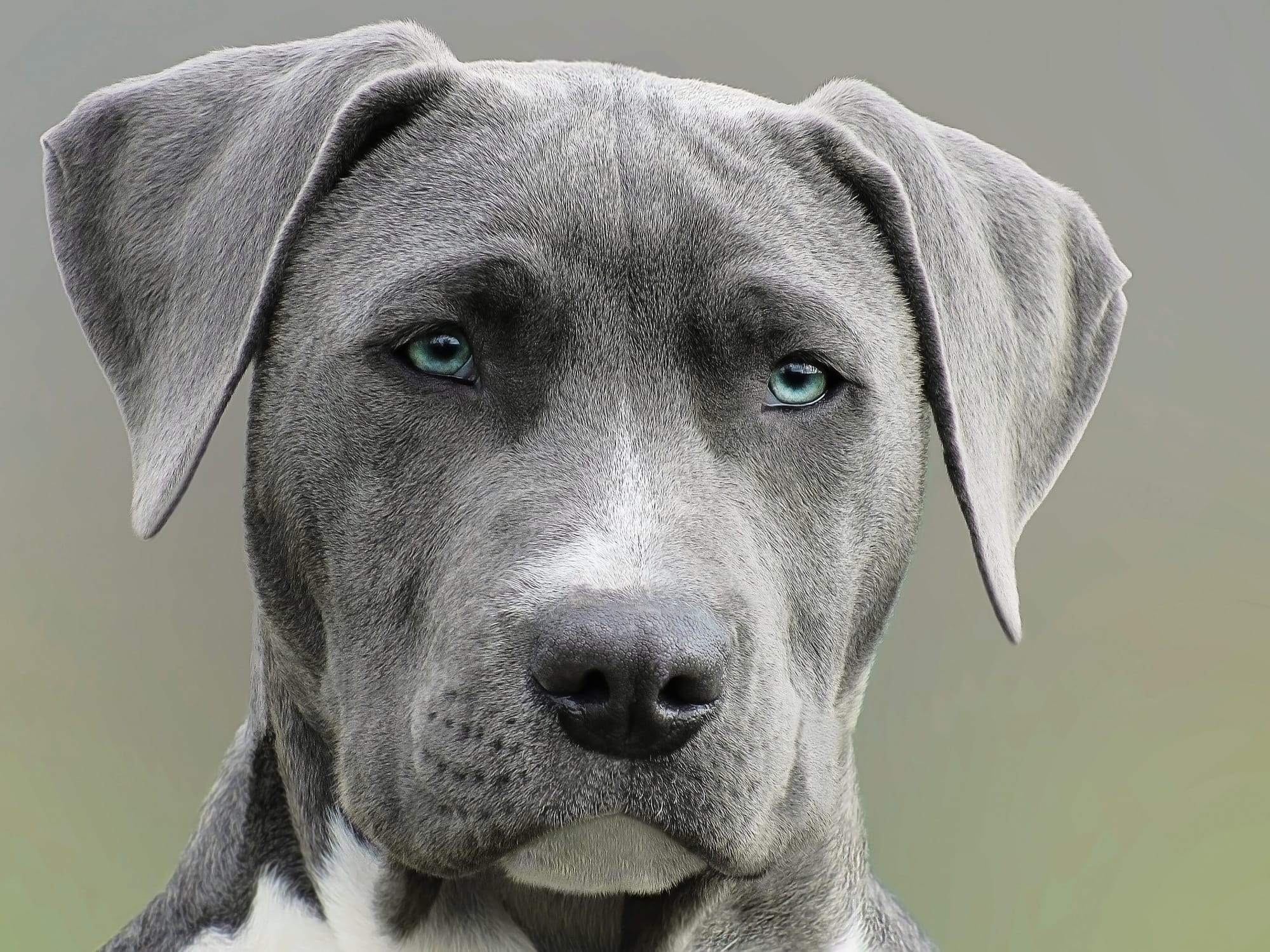The Blue Great Dane, a majestic and awe-inspiring dog breed, has captured the admiration of dog lovers worldwide with its striking steel blue coat and affectionate, gentle giant personality. These incredible canines, set apart from the average Great Dane by their unique pale bluish color, owe their enchanting appearance to the recessive blue gene.
With captivating blue eyes and a charismatic presence, it's no wonder the Blue Great Dane has become a sought-after companion. In this comprehensive guide, we will introduce you to the captivating world of the Blue Great Dane breed, highlighting their distinctive features and emphasizing the importance of proper care and understanding for these gentle giants.
Whether you are already a proud Blue Great Dane owner or considering bringing a Blue Great Dane puppy into your life, this article aims to provide you with essential knowledge and insights to ensure a fulfilling and nurturing bond with your magnificent four-legged friend.
Background and History of the Blue Great Dane
The Great Dane, often hailed as one of the largest dog breeds in the world, has a fascinating origin story that dates back to ancient civilizations. These gentle giants, known for their imposing size and extremely gentle disposition, are believed to have descended from a mix of English Mastiffs and Irish Wolfhounds.
Historical artifacts and depictions of Great Danes or similar large dogs have been found in ancient Egyptian, Greek, and Roman cultures, signifying their longstanding presence among humans. The Blue Great Danes, with its mesmerizing coat color, is a unique variant of this magnificent breed, admired by many for its beauty and endearing personality.
The distinctive blue coat of the Blue Great Danes can be attributed to the role of coat color genetics. The blue hue results from a recessive gene, which causes the dilution of the black color, resulting in several shades of blue, ranging from steel blue to charcoal blue. This genetic trait, though rare, can also be seen in other dog breeds.
Blue Great Danes have captured people's attention and imagination throughout history and popular culture. With their striking appearance and gentle nature, these beautiful dogs have become symbols of nobility and strength, often portrayed in movies, television shows, and even as mascots for sports teams. The charm of the Blue Great Danes continues to captivate hearts and inspire admiration in those fortunate enough to encounter these extraordinary companions.
Physical Characteristics and Temperament of the Blue Great Dane
The Blue Great Dane, with its enchanting appearance, boasts a distinctive blue coat that comes in several different shades, ranging from a deep steel blue to a lighter charcoal blue hue. This rare and eye-catching color, combined with their colossal size, makes these gentle giants stand out among other dog breeds.
Males typically stand between 30 to 32 inches at the shoulder, while females measure 28 to 30 inches, with weights ranging from 110 to 180 pounds. Despite their towering stature, these Danes carry themselves with grace and elegance, often being compared to horses due to their majestic gait.
Regarding temperament, the Blue Great Dane is truly a gentle giant. They are known for their sweet, friendly nature and strong bond with humans. These dogs are well-suited for families, as they generally get along well with children, other dogs, and even cats. Their intelligence and eagerness to please make them highly trainable, although it is essential to start training early in their life to manage their size and strength effectively.
Due to their attachment to their family, Great Danes thrive on companionship and may develop separation anxiety if left alone for extended periods. Proper socialization, exercise, and mental stimulation are crucial to ensure a well-rounded and content Great Danes that will become cherished family members.
Health and Lifespan of the Blue Great Dane
Blue Great Danes are susceptible to certain health issues like all dog breeds. Some common concerns for these gentle giants include hip dysplasia, gastric torsion (bloat), heart issues such as dilated cardiomyopathy, and thyroid problems. Additionally, due to their large size, they may experience joint and bone-related issues, making it crucial to monitor their growth and weight throughout their lives.
The life expectancy of a Blue Great Dane is around 7 to 10 years, though some may live longer with proper care and attention. Factors that can influence their lifespan include genetics, nutrition, exercise, and overall living conditions.
Regular veterinary checkups play a vital role in maintaining the health and well-being of your Dane. These visits will help you stay informed about any potential health issues, ensure your dog is up-to-date on vaccinations, and provide valuable guidance on preventive care.
Early detection and intervention can significantly impact your dog's quality of life and longevity. As a responsible Great Dane puppy owner, prioritizing their health through regular veterinary care, balanced nutrition, and appropriate exercise will contribute to a happier and healthier companion, allowing you to cherish your time together even more.

Caring for a Blue Great Dane Puppy
Embarking on the journey of bringing a Blue Great Dane puppy into your life is both exciting and rewarding. To ensure you're off to the best possible start, it's crucial to select a reputable breeder who prioritizes the health and well-being of their dogs. A responsible breeder will provide information on the puppy's lineage and health screenings and demonstrate genuine concern for the breed's welfare.
Once you've found the perfect Blue Great Dane puppy, preparing your home is the next essential step. This includes securing a suitable sleeping area, obtaining necessary supplies such as food, toys, and a collar, and puppy-proofing your living space to ensure their safety.
Introducing your Blue Great Dane to early socialization and training is crucial for nurturing a balanced temperament. Start by exposing your pup to diverse people, animals, and settings to boost their self-assuredness and flexibility. Alongside this, kick off crate training and obedience practices. Emphasizing foundational commands and leash etiquette will help control their powerful physique.
For dietary guidance, it's wise to seek advice from your vet to ascertain the optimal nutrition for your growing Blue Great Dane. Ensuring they receive an age-suited, balanced diet is key, especially to sidestep joint and bone complications from hasty growth. Investing energy and dedication into these core areas of upbringing sets the stage for a rewarding bond with your majestic companion.
Training and Exercise of the Blue Great Dane
Training and exercise are vital to ensuring your Blue Great Dane grows into a well-adjusted and happy companion. Employing positive reinforcement training techniques, such as praise, treats, and affection, can be highly effective for Great Dane Blues. These gentle giants are eager to please, so using motivational rewards will help reinforce desired behaviors.
Early obedience training is crucial, as it helps establish a strong bond between you and your dog and ensures your Blue Great Dane will be well-mannered and easy to manage as they grow. A balanced approach to mental and physical exercise is essential for the overall well-being of your Blue Great Dane.
Regular walks and play sessions will help keep them physically active and maintain a healthy weight. At the same time, puzzle toys and training exercises can provide mental stimulation, preventing boredom and destructive behavior. To promote positive behavior, be consistent with your expectations and rules, and avoid using harsh punishment, which could damage your relationship with your gentle companion.
Engaging your Blue Great Dane in various activities and training exercises will strengthen your bond and ensure your happiness and well-being throughout your life. With dedication, patience, and love, you'll have a loyal and well-behaved gentle giant by your side.

Grooming and Maintenance of the Blue Great Dane
Grooming and maintenance play a significant role in keeping your Blue Great Dane looking and feeling its best. Though these gentle giants have a short coat, regular brushing is essential to remove loose hair, distribute natural oils, and maintain a healthy shine.
Using a soft bristle brush or a grooming glove once or twice a week should suffice for their coat care needs. Bathing your Blue Great Dane should be done as needed, typically every 4 to 6 weeks, using a gentle dog shampoo to avoid stripping their coat of essential oils.
Nail trimming and dental hygiene are crucial to your dog's overall health. Regular nail trims, usually every 3 to 4 weeks, will prevent overgrown nails from causing discomfort or affecting their gait. Dental care, including teeth brushing or dental chews, should be a part of your dog's routine to avoid plaque buildup and dental issues.
Blue Great Danes, like most dogs, do shed, but their shedding is relatively moderate compared to other breeds. Regular grooming will help minimize shedding and keep your home cleaner. Dealing with any potential odor is typically managed through frequent bathing and maintaining a clean living environment. By staying on top of your Blue Great Dane's grooming and maintenance needs, you'll keep them looking and feeling great and contribute to their overall health and happiness.
Frequently Asked Questions
Are These Dogs Good for Families?
Great Danes are known for their gentle and friendly temperament, making them a popular family choice. They are also one of the largest dog breeds, so ensuring you have enough space for a big dog is important.
Does This Breed Get Along with Other Pets?
Great Danes typically get along well with other pets, including dogs, cats, and even small animals. However, as with any breed, early socialization and training can help ensure a smooth introduction to other pets.
What two breeds make a Great Dane?
The Great Dane breed was created by breeding several different dog breeds, including the Mastiff and Greyhound. The result is a powerful and majestic breed that is known for its size and loyalty.
How long do Blue Danes live?
The lifespan of a blue Great Dane can vary, but on average, they live between 7 and 10 years. Factors such as diet, exercise, and genetics can all impact a dog's lifespan.
Are Great Blue Danes rare?
Blue Great Danes are considered rare due to the recessive blue gene that is responsible for their unique blue coat. This gene can sometimes result in a steel blue or pale bluish color and in some cases, blue eyes.
How much is a blue Great Dane worth?
The value of a blue Great Dane can vary greatly, depending on several factors, such as the dog's coat color, eye color, and overall health. On average, a blue Great Dane puppy can cost anywhere from $1,000 to $4,000. However, it's important to remember that the price should not be the only consideration when choosing a pup.
Conclusion
Owning a Blue Great Dane can be a truly rewarding experience for those who are prepared to provide the proper care and attention these gentle giants require. From their striking blue coats to their friendly and affectionate personalities, Blue Great Danes are a breed that is hard not to love.
With the right approach to training, exercise, and nutrition, these dogs can be wonderful companions that offer love, loyalty, and joy for many years to come. So, if you're looking for a big and loving friend, a Blue Great Dane might be just the companion you're looking for.
For additional pet-parenting tips, head over to TryFi.com's Off Leash blog.
And don't forget to check out TryFi's innovative Fi Dog Collar, which offers GPS tracking, activity monitoring, and escape alerts to keep your furry friend safe. Try the Fi Dog Collar today!

